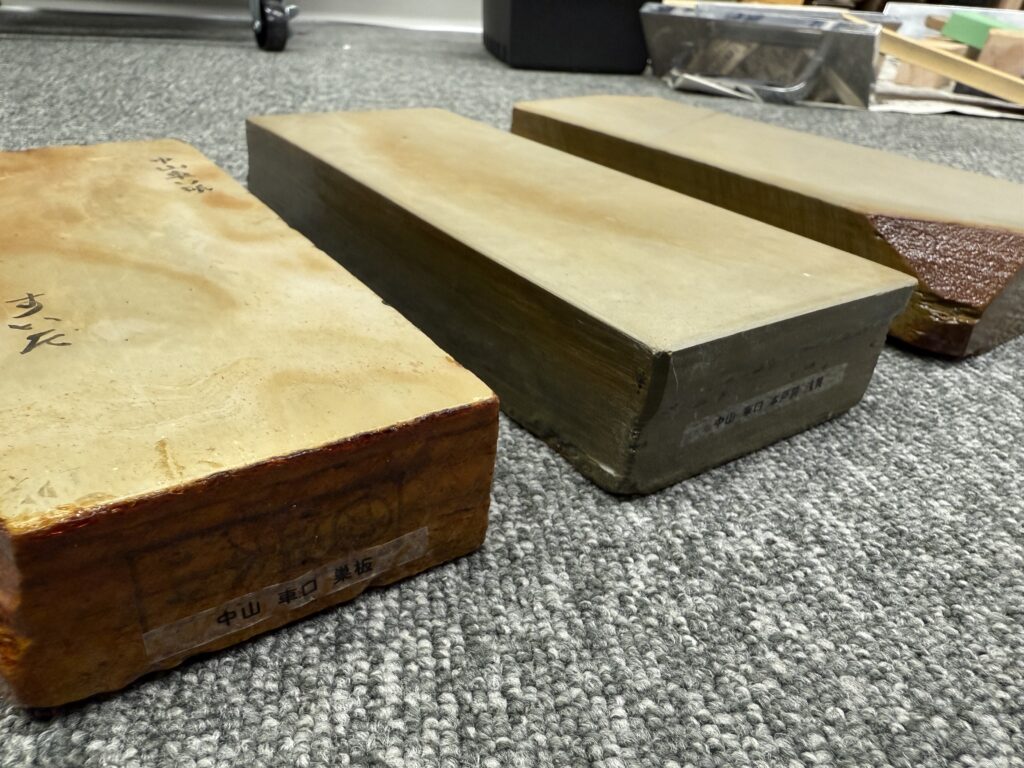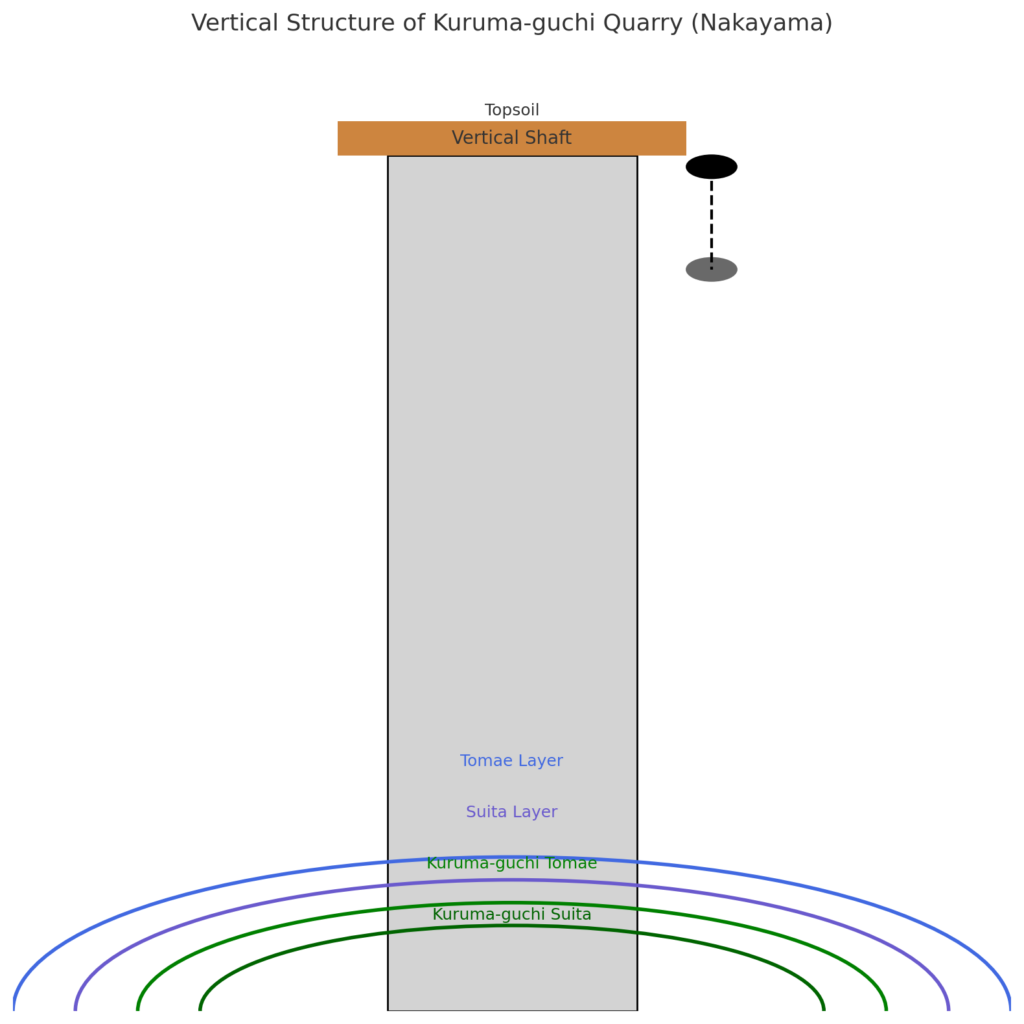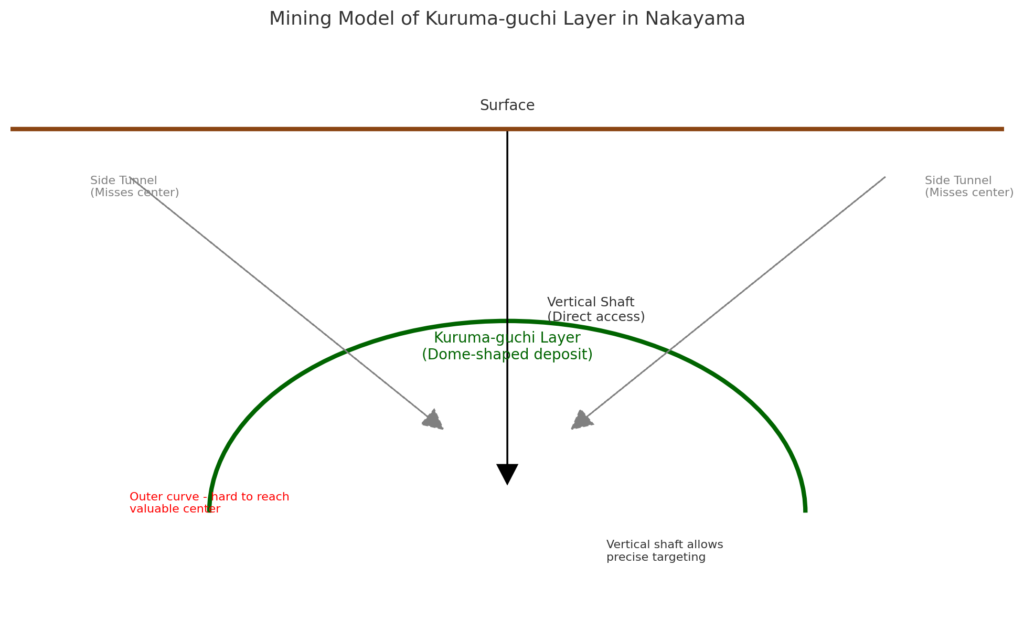
1. what is a kurumakuchi grinding wheel? Origin of the name
Among natural whetstones, there is one that is called “miraculous” – the “Nakayama Kurumaguchi Togishi. Among whetstone fans and craftsmen, this stone is called “a dream piece” that one would like to use just once. Why is it so special?
The name “Kurumaguchi” is derived from the word “kurumaguchi,” which means “pulley,” although there are various theories. The other theory is that the name “Kurumaguchi” is derived from the stratigraphic structure of the whetstone layer, which spreads out like a fan or a dome. Another theory is that the name “Kurumuchi Formation” has been used since ancient times because the formation looks like the “mouth of a wheel” – a formation that radiates out from the center of a wheel.
This layer is the deepest and narrowest of all the Nakayama whetstones and is found only in a limited number of locations, so mining it required special skill and luck. Nakayama general grinding stones are also very fine in all layers and suitable for final finishing, but Kurumakuchi is especially popular because it is finer and there are only a few of them.
2. mining method and domed layer structure


One of the reasons Kurumaguchi whetstone is so rare is because of the difficulty of mining it.
While ordinary Nakayama sharpening stones (such as Zuita and Tozen) were often extracted by “horizontal tunnels” or “slope open-pit mining,” which dig horizontally from the mountainside, the Kurumuchi Formation is sunken deep underground in a dome shape and was accessible only by vertical well tunnels, which are dug vertically.
Mining operations were conducted as if digging a well, digging down at least 10 to 15 meters below the surface of the ground and aiming for the “ideal polishing layer” at the center of the well. The workers used baskets and pulleys to ascend and descend, while hand-digging to cut out grinding stones by relying on nodules (natural cracks).
This vertical shaft mining is,
- Difficult to excavate
- Very little can be extracted when digging
- High risk of water gushing and collapse.
and for these reasons, it has only been done for a very limited period of time, by very limited craftsmen, and under very limited conditions, and the mountain is now completely closed.
It is obvious in the diagram:
- Horizontal digging → only the outer edge of the dome can be dug.
- Vertical digging → pinpoint access to the central layer
That is why it is positioned as a “very localized layer that can only be taken vertically” = car mouth.
3. performance and rarity as a grinding wheel

Is it worth all that hard work and digging? The answer, of course, is “yes.
Kurumaguchi grinding stones have the following characteristics
- Particles: Ultrafine (0.1 microns or less)
- Sharpening feel: smooth yet firm bite on the blade “silk slip”.
- Sound: Quiet sharpening sound when sliding (characteristic of high-grade stones)
- Mirror finish: Super mirror finish is possible (especially for razor blades and cultural knives)
- Wetting color: Beautiful change from dark pale blue to dark green when absorbing water
In addition, Kurumaguchi whetstones are divided into such types as “Kurumaguchi Zuita” and “Kurumaguchi Tozen,” each of which has different sharpening characteristics. Souita is slightly softer and the finish is shiny. Tozen is slightly harder and produces a crisp edge.
It is said that only a few dozen of these stones could be harvested per year, and today an unused piece can fetch several hundred thousand yen or more on the market. It is truly a “phantom whetstone.
4. market distribution and contemporary value
Currently, there is no new mining of Kurukuchi whetstone. Therefore, those in circulation are limited to the following
- Dead stock mined and stored during the Showa period
- Warehouse inventory held by former miners and tool dealers
- Used items given away by collectors
These grinding stones are,
- Appearance (pattern, wet color)
- Sound (sharpening sound echoing in the hand)
- Information on the time of digging and the miner
The higher the price, the more expensive it will be if all of the following are present.
Even at auctions and specialty stores, the mere mention of the name “Kurumakuchi-style” attracts a great deal of attention. In some cases, items that are not actually from the Kurumakuchi layer are labeled “Kurumakuchi-style” and sold, so an “eye” is required to determine authenticity.
summary
- Kurumakuchi whetstone is an extremely limited natural whetstone obtained from the “dome-shaped layer of illusion” that existed in Nakayama.
- Mining required vertical shafts of more than 10 meters in length, which was very dangerous and difficult.
- Rare quality in the world in terms of smoothness, mirror-like surface, and particle uniformity
- It is no longer mined and only a few dead stocks and collectibles are sold at high prices.
From the standpoints of geology, craftsmanship, and culture, Kurumaguchi whetstones are “subterranean works of art” born from a miraculous balance of these three elements. Their specialness is instantly apparent when sharpened, which is why they have been passed down through the decades.
